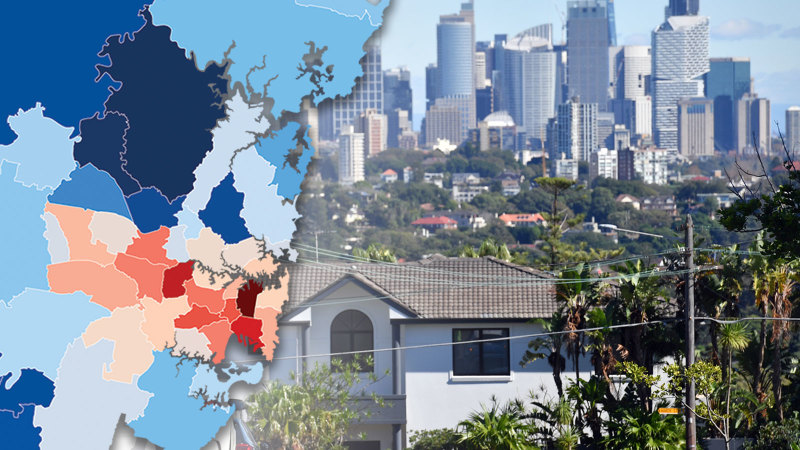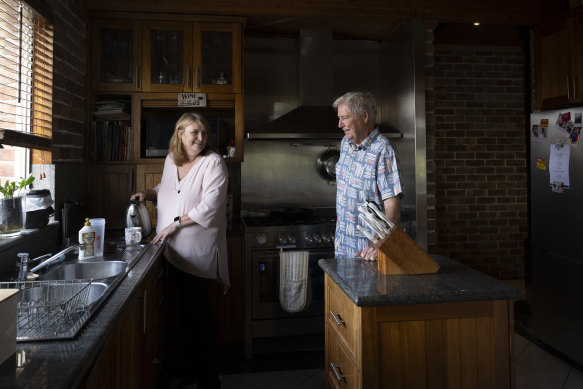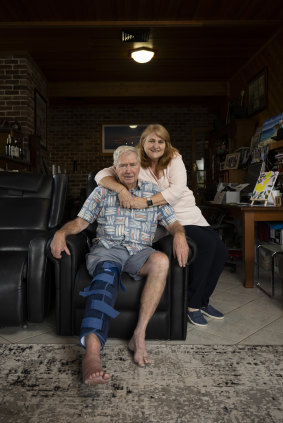The Sydney suburbs with the most spare bedrooms
Save articles for later
Add articles to your saved list and come back to them any time.
Baby Boomers are hanging on to bigger family homes in Sydney’s middle-ring suburbs, with more than a quarter of the city now sitting on two spare bedrooms, while others struggle with overcrowding.
A Herald analysis of 2021 census data shows a swath of well-located areas on the north shore, hills district and Sutherland Shire with a high percentage of spare bedrooms.
The median age of people living in these areas is older than the rest of Sydney, and there is a higher proportion of people aged over 65, suggesting well-located housing stock could be freed up by encouraging retirees and empty-nesters to downsize the family home.
With Sydney’s median house price reaching $1.58 million in the September quarter, and low vacancy rates leading to extreme rental increases, housing affordability has become a key political issue. Federal and state governments are facing calls to remove barriers for people wanting to downsize, including reducing stamp duty and other transaction costs, reassessing the exclusion of the family home from the pension assets test, and rezoning to encourage construction of suitable dwellings.
A Turnbull-era policy to encourage downsizing has floundered, with tax office figures showing only 61,000 people have taken up the scheme that provides concessions for older Australians to sell the family home and contribute a portion of the proceeds to superannuation in the five years since July 2018.
Grattan Institute deputy program director for economic policy, Trent Wiltshire, said even a modest increase in downsizing would improve housing affordability.
“It’s not about everyone downsizing, but a small shift in the percentage of people that do decide to downsize will free up housing and help with supply,” Wiltshire said.
“There are a few barriers and stamp duty is obviously a major one – it costs a lot of money to move house, so people tend to stay in houses for longer than they need.”
Middle-ring areas where between a third and half of people reported two or more spare bedrooms in the census include the areas around Baulkham Hills, Ku-ring-gai, Pittwater, Cronulla – Miranda – Caringbah, and Pennant Hills – Epping. (This is based on Australian Bureau of Statistics’ statistical area 3 (SA3), which is bigger than a postcode but usually smaller than a local government area).
In all of these areas, ABS figures show the percentage of people aged 65 was higher in 2022 than 2012, suggesting that retirees are choosing to stay in their homes.
Across Greater Sydney one in 10 residents say they need at least one extra bedroom.The most overcrowded SA3 areas are Auburn, Canterbury, Fairfield, Merrylands – Guildford, and Bankstown, where 15-20 per cent of residents need at least one extra bedroom and 6-8 per cent of people need at least two extra bedrooms.
Graham and Dianne Hobbs have both retired but have no plans to leave their home in Castle Hill and downsize because Graham built the house and they have so many memories there.Credit: Janie Barrett
Michael Blythe, a former Commonwealth Bank economist and now economist-in-residence at property technology company Downsizer.com, said many retirees were open to downsizing to free up cash but were reluctant to compromise on lifestyle.
“Most downsizers don’t want a one-bedroom apartment with an underground car parking space,” Blythe said. “It comes back to things like ‘where are we going to park the caravan?’ or ‘can we fit the dining table to make sure we can have Christmas dinner at our place’.”
A survey by Digital Finance Analytics for Downsizer.com, with a rolling sample of 52,000 over a year, suggests that there are 1.72 million potential downsizer households nationally over the next five years. The main reasons people consider downsizing are to reduce home and garden maintenance, move to a location with better transport or a dwelling more suitable for ageing, and to release capital.
Dianne Hobbs said their home provides space for Graham’s hobbies, and for country cousins to visit.Credit: Janie Barrett
The main barriers are the price of the potential replacement home and the cost of moving. Once people hit 75, they are also more likely to decide moving would require too much effort, or that they are too frail or ill to move.
Of those who move residence, 36 per cent stay within the same postcode and a further 24 per cent stay within 9 kilometres of their former home, the survey found.
Many parts of Sydney are dominated by low-density, with the occasional cluster of high-density apartment blocks in a corner of a suburb. There is usually a lack of medium-density options such as villas, townhouses and larger apartments, and dedicated retirement living.
Katie Stevenson, NSW executive director of the Property Council, said tax and pension settings discouraged downsizing, and there were inconsistencies in the application of GST to retirement living. She said the “missing middle” was also the result of zoning laws where dual occupancies or townhouses were often not permitted.
“There’s the political element – there has often been a view towards protecting the whole of the suburb by allowing a significant increase in density close to the train station or along the main road … to preserve the rest of the community from any change,” Stevenson said. “It reflects outdated community attitudes that have filtered through to local politicians.”
Several tax reviews have recommended replacing stamp duty with a broad-based land tax. While politically unpopular, one of the key economic arguments is that the cost of holding land is too low, and this unfairly shifts the tax burden to younger generations.
Dr Laurence Troy, a senior lecturer in urbanism at the University of Sydney, said he was unconvinced that empty rooms would solve the housing crisis.
“The assumption that because your kids have left home you don’t need that space any more is really problematic,” Troy said.
“Often older people who have retired actually end up spending a lot more time at home than they otherwise would have in the past, and they possibly have grandchildren visiting at different times.”
He said older homeowners had “done what they were asked to do” by former governments, and there were health and wellbeing benefits to letting people “age in place”.
Graham and Dianne Hobbs are only using two of their four bedrooms in their home in Castle Hill, but they have no plans to downsize unless they are forced into it by poor health.
“It took us 20 years to build the house, so we’re very emotionally attached,” Dianne said.
Graham was an owner-builder and designed the house to live in forever. The couple raised their three older children in the house, and two of them live nearby with four grandchildren between them.
Graham and Dianne’s youngest son, aged 14, is still at home, but they can’t see themselves moving even when they become empty-nesters.
“Graham’s got lots of hobbies and he’s got a big workshop in this house where he fixes old car – it would be hard to find somewhere else [you could do that] and you need to have something when you retire to keep you occupied,” Dianne said. “We also often have country cousins come to stay”.
with Nigel Gladstone
Start the day with a summary of the day’s most important and interesting stories, analysis and insights. Sign up for our Morning Edition newsletter.
Most Viewed in National
From our partners
Source: Read Full Article



